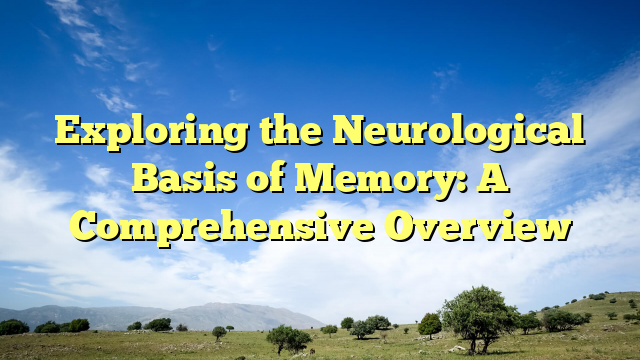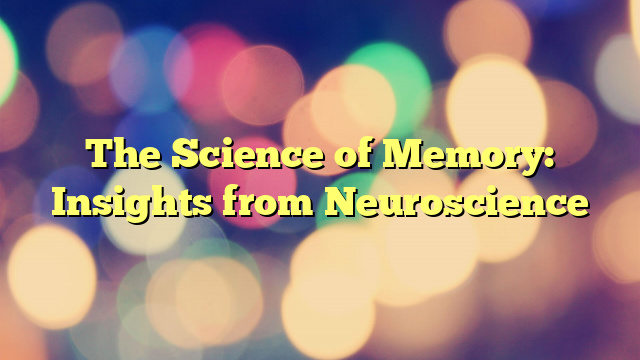Memory is a fascinating aspect of human cognition that has intrigued scientists and researchers for centuries. The ability to store, retain, and recall information is essential for learning, decision-making, and navigating daily life. In this article, we will delve into the neurological basis of memory, exploring the intricate processes that underlie this fundamental cognitive function.
Types of Memory
Memory can be broadly categorized into two main types: short-term memory and long-term memory. Short-term memory, also known as working memory, involves the temporary storage of information for a brief period, typically lasting a few seconds to a few minutes. Long-term memory, on the other hand, is the more stable and enduring form of memory storage, allowing us to retain information over an extended period of time.
Neurobiological Processes of Memory
The process of forming and retrieving memories involves complex interactions among various regions of the brain, including the hippocampus, amygdala, and prefrontal cortex. The hippocampus plays a crucial role in the consolidation of new memories, while the amygdala is involved in the emotional aspects of memory formation. The prefrontal cortex, responsible for executive functions such as decision-making and planning, also plays a role in memory processes.
Neurons, the basic building blocks of the brain, communicate with one another through synaptic connections. When we form a memory, these connections are strengthened through a process known as long-term potentiation (LTP), which enhances the transmission of signals between neurons. This synaptic plasticity is believed to underlie the formation of long-term memories.
Disorders of Memory
Memory disorders can result from various factors, including brain injury, neurodegenerative diseases, and psychological trauma. Conditions such as amnesia, Alzheimer's disease, and post-traumatic stress disorder can significantly impair an individual's ability to form and retrieve memories, affecting their daily functioning and quality of life.
Conclusion
In conclusion, the neurological basis of memory is a complex and multifaceted process that involves intricate interactions among different brain regions and neural networks. Understanding how memories are formed, stored, and retrieved can provide valuable insights into the underlying mechanisms of cognitive function and may ultimately lead to the development of novel therapeutic interventions for memory disorders.
FAQs
Q: What are the key brain regions involved in memory processes?
A: The hippocampus, amygdala, and prefrontal cortex are key brain regions that play a critical role in memory formation and retrieval.
Q: How does synaptic plasticity contribute to memory formation?
A: Synaptic plasticity, particularly long-term potentiation (LTP), enhances the transmission of signals between neurons, strengthening synaptic connections and facilitating the formation of long-term memories.
Q: What are some common memory disorders?
A: Common memory disorders include amnesia, Alzheimer's disease, and post-traumatic stress disorder, which can result from various factors such as brain injury, neurodegenerative diseases, and psychological trauma.
Unlock Your Mental Potential



